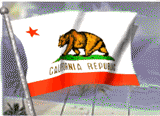Anaheim
Bakersfield
Chula Vista
Concord
Corona
Costa Mesa
Downey
East Los Angeles
El Monte
Escondido
Fontana
Fremont
Fresno
Fullerton
Garden Grove
Glendale
Hayward
Huntington Beach
Inglewood
Irvine
Lancaster
Long Beach
Los Angeles
Modesto
Moreno Valley
Oakland
Oceanside
Ontario
Orange
Oxnard
Palmdale
Pasadena
Pomona
Rancho Cucamonga
Riverside
Sacramento
Salinas
San Bernardino
San Diego
San Francisco
San Jose
Santa Ana
Santa Clarita
Santa Rosa
Simi Valley
Stockton
Sunnyvale
Thousand Oaks
Torrance
Vallejo
›› California: Drug
Climate
Drugs such as cocaine, heroin, methamphetamine, and marijuana are smuggled into
the state from Mexico; however, methamphetamine and marijuana are produced
or cultivated in large quantities within the state. San Diego and Imperial
Counties remain a principal transshipment zone for a variety of drugs – cocaine,
heroin, marijuana and methamphetamine – smuggled from Mexico. Although the
northern half of California is awash in methamphetamine in more rural areas,
heroin remains the number one drug of abuse in San Francisco, heroin and
crack cocaine continue to impact Oakland, and methamphetamine continues in
and around Sacramento.
- Cocaine
Cocaine is readily available throughout the state with Los Angeles remaining
one of the nation’s largest cocaine transshipment and distribution centers.
Cocaine is also widely available in San Francisco and other areas of northern
California.
- Heroin
The increased availability of high purity heroin that can be snorted allows
a new, younger population to use heroin without a syringe and needle. Drug
treatment specialists stated that these new heroin users ingest large amounts
of heroin and become quickly addicted.
- Meth
Methamphetamine is the primary drug threat in California. Mexican organizations
continue to dominate the production and distribution of high-quality meth,
while a secondary trafficking group, composed primarily of Caucasians, operates
small, unsophisticated laboratories. Clandestine laboratories can be found
in any location: high density residential neighborhoods, sparsely populated
rural areas, remote desert locations in the southern portions of California,
and the forested areas in northern California. In recent years, there has
been a decrease in the number of meth labs seized in California and an increase
in the number of meth labs just south of the border in Mexico.
- Club Drugs
Although MDMA or Ecstasy was considered the most popular “club drug” in the
state among teens and young adults, there are indicators that its use may
be decreasing across the board, yet consistently available in geographical
pockets. First, the Partnership for a Drug Free America conducted a study
released in 2004 which stated the use of Ecstasy among teenagers “had dropped
25 percent in the last two years, (that) decrease translates into an additional
770,000 teens rejecting the once trendy drug.” Second, law enforcement has
targeted rave promoters in the San Diego county area, resulting in their
inability to hold such events and thereby decreasing the possibility for
distribution of Ecstasy through that channel. Recent studies indicate that
use of MDMA is expanding from raves and clubs into schools, malls and residences.
Compton (near Los Angeles) remains a primary source of PCP throughout the
U.S. Street gangs continue to control both production and distribution of
PCP. Though not as widely popular as most rave drugs, LSD remains readily
available throughout the Los Angeles area. The ample supply of LSD is due
to the number LSD laboratories operating in remote areas of Northern California,
which has been the center of LSD production since the 1960’s. Internet sales
of GHB and GBL persist.
- Marijuana
Marijuana remains the most widely available and abused illicit substance in
California. Large quantities of low-grade marijuana are smuggled into the
state from Mexico. Highly potent Canadian marijuana, commonly referred to
as “BC bud” is also smuggled into the state. Potent domestic marijuana is
also cultivated in sophisticated indoor, hydroponic gardens throughout the
state.
